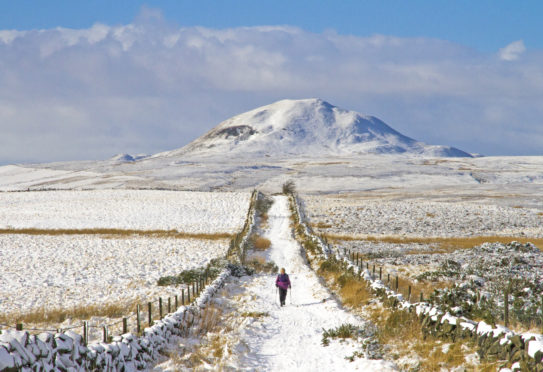“Hiya!” Oh it’s such a small word. Such a simple word. So easy to utter.
But depending on where you are and who you’re saying it to, you could get a grateful smile in return, a look of pure terror or, in some situations, you might get no reaction whatsoever.
Scottish hills are generally very friendly places, none the less I’ve had several encounters on lofty hillsides recently where I’ve been completely ignored by a passer-by when there was nobody else around. No eye contact, no hello, no acknowledgement whatsoever, it’s like I’m not even there.
As a human animal I’d have thought it a perfectly natural instinct to want to make eye contact on approach, however fleetingly, in order to size one another up and judge intent, albeit on an unconscious level? But I suppose there could be any number of genuine explanations for not doing so.
Eye contact anxiety perhaps? Having a different culture or customs? Inwardly raging at having encountered someone else on your walk? I don’t know, but personally I find it really weird when I’m completely ignored by other people on the hill.
Being ignored isn’t necessarily a bad thing, depending on where you are. Most of us are content to ignore and be ignored in towns and cities, where population density demands a level of privacy and anonymity in order for the urban space to function.
Some of us might not like it and might wish that cities were friendlier places, but it’s probably for the best. Try picturing an Aberdeen where you greet every single passer-by with the same small-talk that you might employ on a remote hillside. Lunch breaks would be six hours long and none of us would ever get anything done. “Sounds nice”, I hear you say.
Regardless of what the mystical rules of etiquette dictate, we’re still individuals and can therefore locate ourselves somewhere along a scale of (dis)comfort where cheerful hellos are concerned. A scale of 1 to 10, where 1 is arriving solo at the North Pole after weeks of solitude and then completely ignoring another random adventurer who just happens to be standing there at the same time and 10 is the equally disturbing extreme of offering a joyous hello to every single person you pass on Union Street on a rainy Saturday afternoon.
I’m firmly in the camp that thinks acknowledging a fellow human being when they pass by is a nice thing to do and I’d therefore rate myself as an 8. I live in a rural setting where cheery greetings to strangers are a daily occurrence, and while I’m content to play by the rules in towns and cities I do find it hard not to acknowledge passers-by in certain other urban situations. If it’s a greenspace or a cycleway I’ll probably attempt a hello. The same if it’s early in the morning in the city centre and there aren’t many people about. And if it’s an elderly person it usually feels completely normal to say hello regardless of place or time, although I’m not entirely sure why?
Still, I imagine a lot of people find the urban setting reassuring, as it’s the place where the mystical rules are most clear-cut. Beyond the urban periphery things get complicated, the general rule of thumb being that the quieter or more rural it gets, folk are more likely to engage when they pass one another, whether that’s eye contact, a smile or a hello.
Yes I know, it sounds utterly terrifying. It can make you feel oddly self-conscious when you realise you’re going to pass within a few feet of an approaching walker, especially if you’ve spotted them from some distance away. Suddenly you’re exposed, no longer a face in a crowd, and your panicked brain now has several long minutes to ponder the awkwardness of what’s coming.
Hilariously, despite experiencing it more times than I can count, the process of passing someone on a path hasn’t got any easier. I’m as comfortable as I think it’s possible to be with the whole process but does ANYONE find it entirely natural? At 20 metres I’m still not entirely sure where to look. At the ground? The sky? My phone? Personally I find that pretending I’ve spotted an eagle in the adjacent field works quite well. And then in the final moments you must time your glance back towards their face to the millisecond. Too early and you look crazed. Too late and you look nervous. But how long do you leave it before you break eye contact and look away again? Too soon and you look nervous. Too late and you look crazed. But what’s the worst that can happen?
Even forced smiles can trick your brain into releasing endorphins and, as smiles are contagious, can provoke the same response in the person you’re passing. Ultimately it’s everyone’s right to choose of course, but there’s really nothing to fear from a friendly exchange.
It can brighten your day and it can brighten theirs too, and surely that fact alone is worth any fleeting sense of awkwardness?
Ben Dolphin is an outdoors enthusiast and president of Ramblers Scotland











